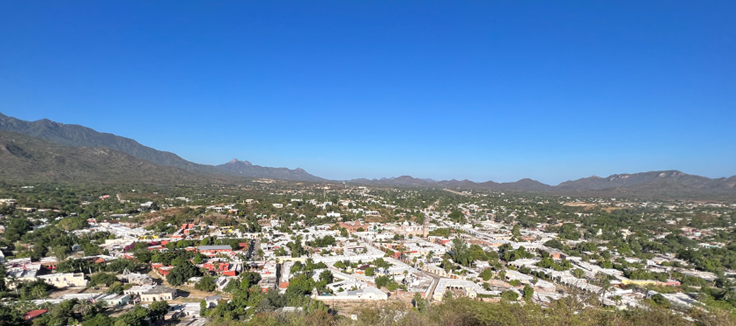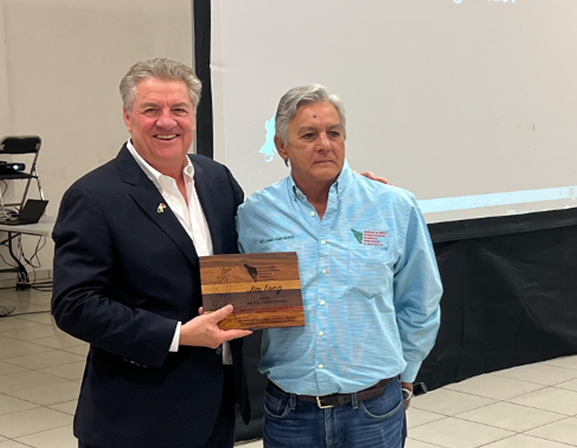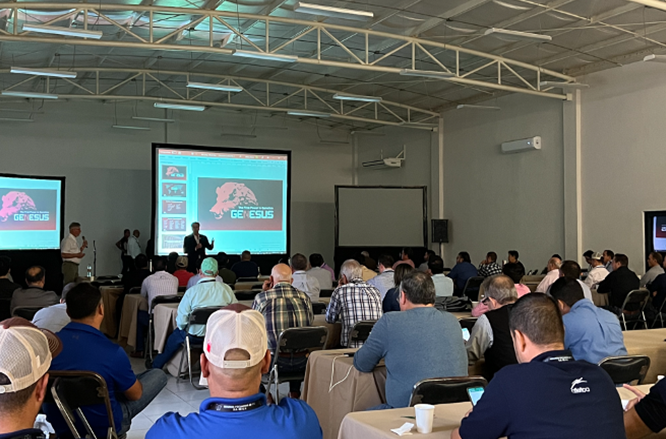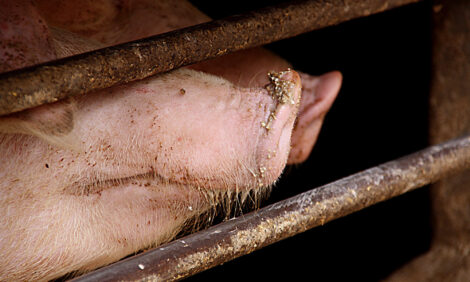



Mexico road trip
Jim Long Pork CommentaryLast week we were in Sonora state in the Northwest of Mexico.
Our Observations
- Sonora is a very dry–hot region with about 10 inches of rain annually.
- The region's crops depend on irrigation.
- After 4 years of almost no rain (that’s a real drought) this year, there was significant rainfall that replenished the water levels in the reservoirs.
- Sonora also has significant livestock and poultry production. Over the last 20 years, the pork packers of Sonora have developed a significant pork export market to Asia and have been the region that has led Mexico’s exports.
- Currently, Sonora Packers are having a difficult time in the Asian markets. Mexico’s hog price is 46.46 pesos/kg or $1.08 U.S. liveweight/lb. equivalency in U.S. 66.76¢, Canada 59.08¢, Spain 75.27¢, Brazil 58.28¢. You can see the challenge. Mexico’s hog price is significantly higher than other major export countries. Asian buyers might be loyal to a supplier from long time relationship but this huge price spread is hard to overcome. It’s a real challenge for Mexico’ Pork Exporters.
- On the flip side, the Mexico hog market price is very strong. The price spread to U.S. hog price is normally 8-10¢ U.S./lb. Now it’s 40¢. This in itself reflects strong domestic pork demand and helps the export packers move product in their domestic market. The U.S. – Mexico price spread is also pulling large amounts of pork from the U.S. to Mexico. Over 40% of U.S. pork exports go to Mexico. One Mexican packer asked us how soon would U.S. hog price increase. They want high U.S. hog prices, as do U.S. producers.
- In Mexico, there is consolidation of production like in all other parts of the world. Bachoco a major poultry and egg producer is acquiring swine production and packing in a major way. One thing unique in Mexico is packer groups have their own retail outlets to sell the product. These include Yoreme, Ojai, and Kowi groups in Sonora. Something we see not only in Mexico but in other parts of the world. We are not aware of any significant retail stores by U.S. or Canadian integrators.
- We understand Mexico has between 1 – 1.2 million sows. Similar to Canada’s production. The population of Mexico is about 130 million people. The new sow herd consolidation as old sow barns are closed and new sow barns supply existing nursery – finishers. With 130 million people, any increase in per capita consumption is a lot of extra pork needed.
- In Sonora, we had the pleasure to speak at the XXIX Congress held in Álamos.
Álamos is a colonial town built in the 1600s beside a major gold mining site. A town today of about 25,000 people its buildings reflect the construction 300 years ago. It’s quite a nice place to visit and observe.
The swine congress was well organized and well attended. There were speakers on many swine subjects from 9 am – 8 pm over two days. The speaker sessions were well attended.
In our talk we made some points:
- Mexican producers should be glad they are a pork export country. Import-country pig prices are all significantly higher than export countries, i.e., U.S. liveweight/lb. Mexico $1.08, China $1.69, Korea $1.76, Philippines $1.27 compared to Brazil 58.28¢, U.S. 66.76¢, Canada 59.08¢. Warning – if you want to become self-sufficient in pork and export – expect lower prices – i.e., be careful for what you wish for.
- World pork production led by China, the EU, and U.S. has declined and will stay there for at least the next 12 months – positive for Mexican producers.
- Mexico’s government has stated that in 2024 there will be no GMO – Corn imported into Mexico. We asked the approximately 150 attendees in our talk to raise their hand if they believed GMO – Gene Edited Pork should or will be allowed to be imported and sold in Mexico. One person raised their hand. What was kind of interesting is the numerous PIC representatives in the room, but none of them raised their hand. Over 40% of U.S. pork exports go to Mexico. Maybe a good idea to see if there is a market for GMO – Gene Edited Pork before we rush head first into a pork demand-destroying scenario.
- We also talked about Pork Quality i.e., Better Tasting Pork. Our premise to drive pork demand we have to put “The Other White Meat” program in the cemetery. Pork is red meat. Beef is 2.5 times the price of Pork. Producing Pork that has more marbling, darker red with better water holding capacity in our opinion enhances taste – flavor, and opportunity for higher pork prices.
We told the story of the Dutch Genetic company that had a customer appreciation dinner a week ago in Canada. Sadly, they served roast beef. Maybe a testament to pork eating attributes of their swine genetics? Truly a sad story for our industry. Why would we produce Genetics we don’t want to eat and then expect consumers to eat the same sad product? No wonder per capita pork demand has flatlined. We need to address consumer demand – better taste is what they want – no other reason bellies and ribs lead the pork-cut-out values. Marbled – better taste.
After we spoke a Mexican producer told us there is an annual pork industry meeting in Sonora. He said they serve beef. It’s a global problem that we need to improve our product to one that we wish to consume ourselves. It’s so obvious but we continue to ignore the reality of demand driven by taste.
Summary
The hospitality of the Mexican producers was excellent. They have good hog prices but feed prices are high. It’s a dynamic industry that is committed to having its place in the Global Pork Industry.











